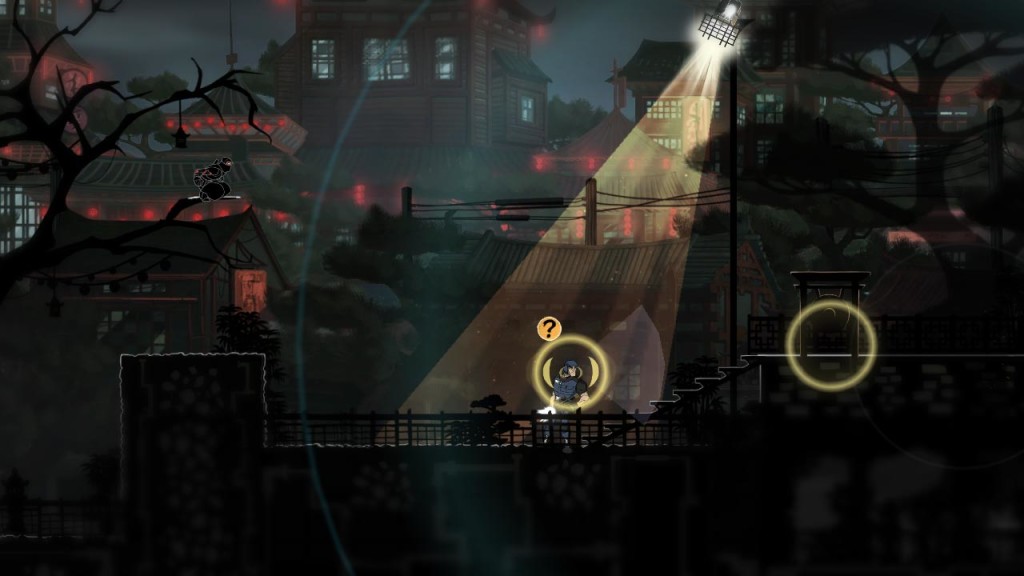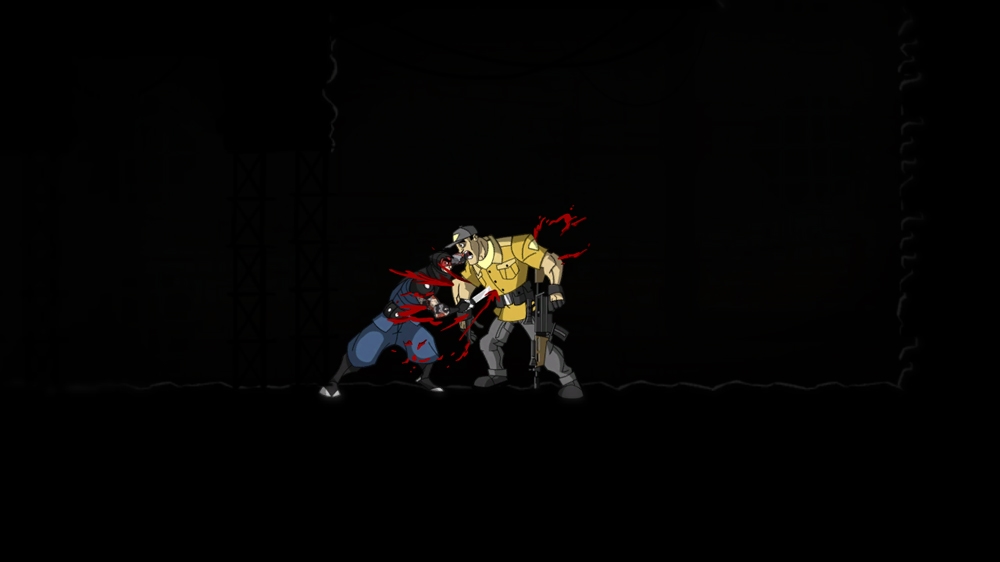Note: You’ll want to play the game before reading the following. A more traditional review can be found here.
“The Way of the Samurai is found in death. Meditation on inevitable death should be performed daily…every day, without fail, one should consider himself as dead. This is the substance of the Way of the Samurai”. – Hagakure, The Book of the Samurai
Ninja are not samurai. They do not meditate on death, but deal it. They do not fight fair; they fight with the advantage of the shadows. But what if the ninja must kill himself to preserve his clan and must meditate on his own mortality? Does a ninja have a right to choose between his own life and death? Must he follow a code of honor?
If there’s one element that characterizes everything that makes Mark of the Ninja exemplary, it’s choice: in the matter of mortality, in tactics, in tackling particular situations, in what tools you use. The narrative forces the player to make these choices, and the “right” answer is never clear. Tough questions arise, but only the player can answer them.
The Mark of which the game is named comes from the choice of the protagonist, who receives the Mark to aid his clan. These special tattoos provide a member of the clan with unbelievable power, but the gift comes at a price: lust for dominance and eventual madness. The only righteous end to those who receive the Mark is death, both to preserve the clan and the world itself from its powers. Thus, the magical tattoos given from a man of the East can only be used in times of dire straits.
***
“If one were to say in a word what the condition of being a samurai is, its basis lies first in seriously devoting one’s body and soul to his master.”
You are told by Azai, the clan leader, that you must save the clan from an evil CEO named Karazhan, who uses his corporate power to attack the clan in the first stage of the game. You wake up during the attack, led by a female ninja named Ora. She guides you and acts as your tutorial for most of the game and tells you what to do. In that sense, she’s similar to Atlas, Bioshock‘s guide, tutorial, and antagonist all in one. Both Azai and Ora appear as allies, but their objectives are very different. They are two masters that command the player. But no one can serve two masters.

The one instrument Ninja know how to play is the gong. This will come in handy.
Although it appears to take its inspiration from Bioshock, Mark of the Ninja diverges from this template. While Bioshock uses the tropes of video games to exemplify its theme of control, Mark of the Ninja affirms the player’s will to make a decision between two alternative choices: life or death.
That decision, though stated frankly enough here, doesn’t appear that way in practice. Decisions are messy. You are a harbinger of death to your enemies, but also a preserver of life for your clan. You can choose to kill every guard in sight out of petty revenge, or take an entirely nonviolent path. That choice is up to you.
***
“When one has made a decision to kill a person, even if it will be very difficult to succeed by advancing straight ahead, it will not do to think about doing it in a long, roundabout way…The Way of the Samurai is one of immediacy, and it is best to dash in headlong.”
As a pragmatic player, I typically kill without mercy whenever something’s in my way. Habits ingrained from other stealth action games made me perform these merciless acts without a second thought. Compassion isn’t an option when you face total annihilation in the face of a changing world. Neither is disobedience to an authority such as the clan’s leader, Azai; to become subversive in the face of battle is to place one’s comrades in danger.
But what if you do not know if your master is an external authority or yourself? What if both Ora and Azai fail to reveal the truth of their own motivations? If one’s master is deceitful, immoral, and evil, does that grant one the right to usurp their authority? Even if both were upstanding and morally upright, would that make the decision any easier?

Ora starts out as the player’s guide, but her words become increasingly violent and obsessed with power. Azai’s motivations for attacking Karazhan were less than honest; he kills the ink used to create the Mark by accident, and now steals advanced technology to rectify his mistake. By the end of the game, when the visuals become half-reality, half-illusion, it’s difficult to tell who is telling the truth and what is a figment of a twisted mind grappling with insanity.
In the end, the player must choose between killing Ora and Azai. The player isn’t given a clear-cut decision. You must choose one master or the other, and the other must die by default. You must piece together the plot’s essential details in order to understand the nature of your choice, and the result of that choice doesn’t have a predictable result.
This surprised me. It is rare that a video game gives the benefit of the doubt to the player. I wanted to make the right choice; if the tattoo really turned me mad, then Ora had to die. Or was she right? Did Azai really betray the clan by destroying the plants through his own folly? Was I meant to take the reigns of the clan by force, or follow the will of my master?
From the dust I came, and to dust I shall return. My choices are still my choices, and I feel the consequences; I can only hope that they are the right ones.
***
“Our bodies are given life from the midst of nothingness.”
